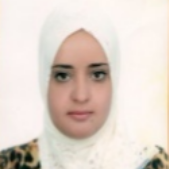
Dhekra El Hamdi
Work place: Laboratoire d’Informatique, Programmation, Algorithmique et Heuristiques (LIPAH), Faculté des sciences de Tunis, Université de Tunis EL Manar, 1068, Tunis
E-mail: dhikra.hamdi@ensea.fr
Website: https://orcid.org/0000-0002-6280-0228
Research Interests: Data Structures and Algorithms, Pattern Recognition, Computational Learning Theory, Computer systems and computational processes
Biography
Dr. Dhekra El Hamdi is a researcher at the Laboratory of Images, Programming, Algorithmic and Heuristic in the Faculty of Sciences in Tunis-Tunisia. She holds a PhD Degree in Computer Science (co- advisorship program occurred between CY Cergy Paris University in France and Faculty of Science in Tunisia in 2019). Her research interests include pattern recognition and deep learning approaches.
Author Articles
A Conic Radon-based Convolutional Neural Network for Image Recognition
By Dhekra El Hamdi Ines Elouedi Mai K Nguyen Atef Hamouda
DOI: https://doi.org/10.5815/ijisa.2023.01.01, Pub. Date: 8 Feb. 2023
This article presents a new approach for image recognition that proposes to combine Conical Radon Transform (CRT) and Convolutional Neural Networks (CNN).
In order to evaluate the performance of this approach for pattern recognition task, we have built a Radon descriptor enhancing features extracted by linear, circular and parabolic RT. The main idea consists in exploring the use of Conic Radon transform to define a robust image descriptor. Specifically, the Radon transformation is initially applied on the image. Afterwards, the extracted features are combined with image and then entered as an input into the convolutional layers. Experimental evaluation demonstrates that our descriptor which joins together extraction of features of different shapes and the convolutional neural networks achieves satisfactory results for describing images on public available datasets such as, ETH80, and FLAVIA. Our proposed approach recognizes objects with an accuracy of 96 % when tested on the ETH80 dataset. It also has yielded competitive accuracy than state-of-the-art methods when tested on the FLAVIA dataset with accuracy of 98 %. We also carried out experiments on traffic signs dataset GTSBR. We investigate in this work the use of simple CNN models to focus on the utility of our descriptor. We propose a new lightweight network for traffic signs that does not require a large number of parameters. The objective of this work is to achieve optimal results in terms of accuracy and to reduce network parameters. This approach could be adopted in real time applications. It classified traffic signs with high accuracy of 99%.
Other Articles
Subscribe to receive issue release notifications and newsletters from MECS Press journals